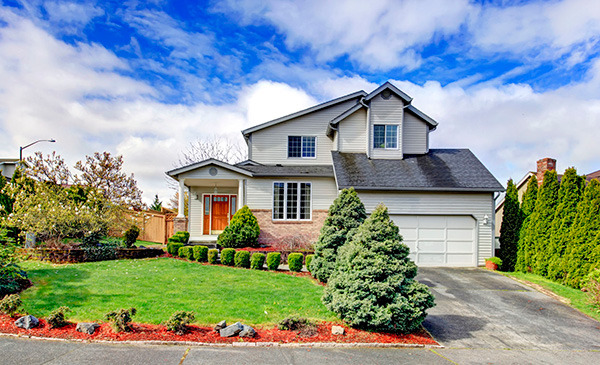How To Turn A Profit Flipping Land Into Residential Property
 Reality TV shows have inspired people to flip houses for profit. They make it look fun, easy and the type of business anyone with some capital can get into.
Reality TV shows have inspired people to flip houses for profit. They make it look fun, easy and the type of business anyone with some capital can get into.
Every once in a while, house-flipping episodes show an underperforming sale and a financial loss. That is why people in the flipping business need a cushion in case things don’t pan out.
This brings us to a slightly different approach. Some speculators start out flipping land. Yes, that’s right. Land.
Flipping Land Can Be Less Risky Than Homes
Rough land can be far less expensive to invest in than blighted homes. There are also fewer unknowns in terms of flipping. Investors won’t need to worry about replacing an electric box, mold behind walls or failing a building inspection. Land flippers can also start with a modest out-of-pocket investment and work their way up to short-term lending to finance endeavors.
The Basic Considerations
There are a few things to keep in mind when selecting a parcel. Property that abuts a street with sewer and water are preferable to scrub land in areas without services. It is not uncommon to run into difficulty drilling an artesian well or getting a permit for a septic system. Developers know this and will jump at street-ready parcels first.
Make certain the parcel qualifies as a buildable lot with the town or city. Then, hire an excavation team or clear the brush and trees yourself. The goal will be to create an open area where a home can be built while leaving suitable greenery.
The next step is to call a real estate agent and list the property. Quick land turnovers can earn several thousand dollars in profit with minimal effort. Remember to factor in hidden costs such as taxes, interest, and recording fees, among others.
Upping The Ante To Spec Homes
After gaining experience in the land flipping business, take that knowledge and apply it to homes. Rather than scoop up a dilapidated structure, employ that land development acumen and take the next step.
Select a parcel that is in a prime residential location. What a surprise it would be to find a wooded lot at the end of a desirable neighborhood that can be developed.
Create A Budget and Obtain Financing
Work closely with a real estate agent to understand the types of homes that are trending and the average sale prices. With that information in hand, come to an agreement with a general contractor who can oversee the spec house project.
Decide on a design and calculate the total costs. Don’t forget to add 15 percent for overruns. Contact your loan originator to help you secure a building loan and put the team to work.
Get The Listing On The Market
Spec home projects can be listed with real estate agents even before the first nail is driven into a 2X4. A savvy real estate agent can get a property up online with design information, an artful rendition of the finished home and key selling points. In a perfect world, a new home buyer may be found before construction begins.
It’s important to realize that it doesn’t require significant wealth to get into the home buying and selling industry. By starting with modest, low-risk land deals and working up to spec homes, a solid living can be earned in the real estate industry. If this idea intrigues you, contact your trusted mortgage professional to discuss financing options and start planning your new real estate endeavor today.
 Spring is many people’s favorite season of the year. Obviously, there are many valid reasons why this is so. One of the best things about spring is that it is an ideal time to sell your home.
Spring is many people’s favorite season of the year. Obviously, there are many valid reasons why this is so. One of the best things about spring is that it is an ideal time to sell your home. If you’ve had to watch your parents transition into assisted living, you may have no desire to call such a place home. You are not alone. According to the Aging in Place Housing Survey conducted by the American Association of Retired Persons (AARP), more than 90 percent of seniors want to remain in their home.
If you’ve had to watch your parents transition into assisted living, you may have no desire to call such a place home. You are not alone. According to the Aging in Place Housing Survey conducted by the American Association of Retired Persons (AARP), more than 90 percent of seniors want to remain in their home.